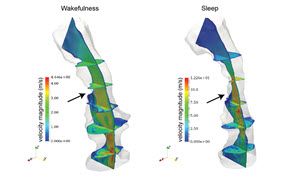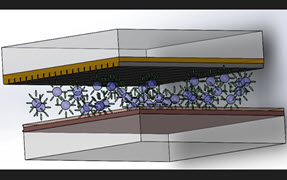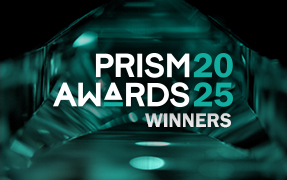Raman Spectroscopy for Drug Safety
Optical technology defends against counterfeit drugs.
In the USA in early 2016, nine people from Florida died after taking counterfeit anti-anxiety tablets sold as Xanax and purchased on the illicit drug market. Weeks later, 10 Californians died from fake Norco pain-relief pills, also sourced from drug traffickers.
By summer, the US Drug Enforcement Administration (DEA) released the terrifying information that hundreds of thousands of counterfeit prescription pills had reached the US drug market, targeting the millions of nonmedical users of pain relievers.
What most of these drugs had in common was the deadly heroin additive, fentanyl, responsible for the overdose epidemic sweeping the US. But while alarming that traffickers of the powerful narcotic have expanded dealings to prescription drugs, fentanyl is just the tip of the global counterfeit iceberg.
From fake cancer drugs and tainted sex stimulants to not-so-natural herbal remedies and anti-malarial copies, the counterfeit industry knows no bounds. But as law enforcement grapples with the crisis, handheld Raman spectroscopy is providing a defense.
This spectroscopy technique interrogates the vibrational states of molecules by directing a laser light at the material. Inelastic scattered light is detected, providing a spectrum, or chemical fingerprint, of the molecules.
“Raman spectroscopy assigns specific chemical signatures to the ingredients present in a drug,” says Sulaf Assi, a lecturer in forensics sciences from UK-based Bournemouth University. “Counterfeit drugs include branded as well as generic medicines, and in each case we’re interested in the active pharmacological substances that will have very specific Raman signatures.”
Assi uses handheld Raman spectroscopy to identify counterfeit medicines, as well as drugs that are commonly abused. Such counterfeits contain more or less than the required active ingredient, are out-of-date or a placebo, or are laced with anything from synthetic opioids to talc.

She has worked with every handheld instrument manufacturer, from BaySpec, Bruker, and B&W Tek to SciMed and Thermo Fischer Scientific. Many of these manufacturers have developed devices that can suppress the background fluorescence that often swamps the Raman signal, achieving detection limits of less than 10 ppm, at least one order of magnitude greater than traditional Raman.
According to Assi, handheld Raman is easy to use, cheap to maintain, requires no sample preparation, and operates in all climate conditions. And while she describes the technology as “still being expensive and in its infancy,” she highlights different configurations that are set to thwart the counterfeiters.
Surface-enhanced Raman spectroscopy (SERS), for one, typically uses a silicon, glass, or paper-based substrate with a nanostructured silver or gold metal surface to enhance Raman scattering and quench background fluorescence. Here, a seized drug can be applied to the SERS substrate for analysis.

Courtesy of Diagnostic anSERS
For example, B&W Tek has released a SERS kit for use with its TacticID system to isolate heroin and fentanyl spectra from the many cutting agents typically present in highly mixed, low-concentration street narcotics. Meanwhile, Ocean Optics uses SERS substrates with its IDRaman mini to detect cocaine in saliva and trace levels of marijuana chemical, tetrahydrocannabinol (THC). And US startup, Diagnostic anSERS, is working closely with police in Maryland while developing relatively cheap chromatography-paper SERS substrates for drugs and narcotics detection.
In another technique, time-gated Raman spectroscopy uses intensive laser pulses to detect short-lifetime Raman photons before the longer-lived background fluorescence photons quash analysis. Finland-based TimeGate Instruments recently launched the world’s first commercial system, equipped with a sub-nanosecond laser source and time-gated single photon detector to acquire Raman spectra. The technology has already been used to expose previously unseen Raman features in a range of drugs.
Taking a different tack, Bruker has tamed fluorescence by equipping its handheld BRAVO spectrometer with two lasers that cover excitation wavelengths from 700 nm to 1100 nm. This dual laser system uses a sequential-shifted excitation algorithm to further suppress fluorescence and maintain detection sensitivity.
In recent research, Assi used such a device to identify ingredients in counterfeit medicines as well as so-called legal highs, psychoactive substances often not controlled by drug laws. “A few police forces around the UK mostly use portable Fourier transform infrared spectroscopy, but in the last year, I have seen a couple of forces starting to use handheld Raman,” she says.
“We see counterfeit antimalarials and antibiotics in Africa, counterfeit Chinese herbal medicines, weight loss products, amphetamines, memory enhancers, and sexual stimulants,” she adds. “Worldwide, handheld Raman is being used more and more to detect counterfeit drugs, alcohol, even coffee. It is a huge problem everywhere.”
Igor Lednev, a professor at the University at Albany, State University of New York (USA), agrees. Right now, he and colleagues are developing laser spectroscopy to interrogate traces of body fluids, hair, and gunshot residue.
Supported by the US National Institute of Justice, he also collaborates closely with the NY State Police crime laboratory. He is certain Raman spectroscopy has “unlimited potential” in drug detection and other forensic applications.
As Lednev notes, spatially-offset Raman spectroscopy (SORS), developed by Raman spectroscopy pioneer, Pavel Matousek, is used to identify materials within opaque containers. Earlier this year, Matousek’s company, UK-based Cobalt Light Systems, launched a handheld SORS system, RESOLVE, for law enforcement and more.
“Within 10 years, Raman spectroscopy will be a universal tool to use at any crime scene,” Lednev says. “When I started my career, I needed to spend all night in the laboratory to measure a single Raman spectrum, but now you can do this in a millisecond with a portable system.”

Courtesy of B&W Tek
Lednev attributes the rapid progress to the development of small, stable laser sources as well as sensitive Mega-pixel CCD cameras that “measure an entire spectrum simultaneously.”
But in what could be a huge breakthrough for Raman spectroscopy, Lednev hopes to take handheld Raman spectroscopy into the deepest, sub-200 nm, ultraviolet wavelengths, where fluorescence interference simply doesn’t exist. His research team has developed a desktop apparatus with UV excitation for biological applications but has also used the method to detect drugs in saliva.
“We’ve reached drug concentrations much lower than those detected by normal Raman spectroscopy,” he says. “But the limitation in the field right now is that we still don’t have small, reliable deep UV lasers, although several companies are making progress here.”
One company, US-based Alakai Defense Systems, manufactures deep UV excimer lasers that emit at 248 nm. It has just released a backpack-sized deep UV Raman tool to detect explosives as well as narcotics, including cocaine and heroin.
Like Lednev, Scott Rudder, vice president of marketing at US-based laser diode manufacturer, Innovative Photonic Solutions (IPS), believes smaller laser sizes and wavelength stabilization have triggered market growth.

He also highlights how “phenomenal” increases in the processing power and efficiencies of cellphones have driven progress. “You can leverage this in handheld Raman spectroscopy to handle the necessary chemometrics,” he adds. “This is a big deal.”
Indeed, powerful processing is imperative for analyzing counterfeit street drugs. According to Rudder’s colleague, Robert Chimenti, product line manager at IPS, these narcotics can contain up to 10 additives.
“They just aren’t clean so you need these massive processing powers to deconvolve [these drugs],” he adds. “We didn’t have this, say, five years ago.”
Alongside chemometrics, the availability of Raman spectroscopic libraries of all potential materials and contaminants is critical to match the spectrum of a test sample with a known reference. Spectral libraries are established for classical drugs and standard contaminants, but less so, for moving targets such as street drugs and legal highs.
Gregory Giuntini, global market manager of safety and security at B&W Tek, spends a lot of time working on such libraries. He recently visited Vietnam, a synthetic drug hub, to study new spectra and also has global laboratory partners helping to construct databases for novel substances.
As he puts it: “You have to have the right global standard for heroin, fentanyl, cocaine, so there’s a global effort to obtain new library data when new drugs come out.”
But as manufacturers come to grips with libraries for new drugs, the endless churn of these substances means business is booming.
According to Giuntini, demand for handheld Raman has spiked in the last three years, fueled by the influx of opioids in the US, counterfeit drugs in China and Africa, and synthetic cannabinoids across Europe. “A lot of the time, someone may also be trying to move volumes of, say Percocet, and there will be counterfeit versions here,” he adds.
And while IPS’s Rudder asserts handheld Raman costs must drop if the technology is to fully transition from forensics laboratories to on-the-street law enforcement, Chimenti is confident rapid market growth will ensue.
The DEA in September issued a public warning that the dangerous opioid carfentanil —100 times more potent than fentanyl - had hit communities across the US.
“We’ve seen a slow burn with narcotics for five to 10 years,” Chimenti says. “But the market is now definitely accelerating exponentially and is still a long way from the top.”
–Rebecca Pool is a science and technology journalist based in the UK.
- Have a question or comment about this article? Write to us at spieprofessional@spie.org.
- To receive a print copy of SPIE Professional, the SPIE member magazine, become an SPIE member.





